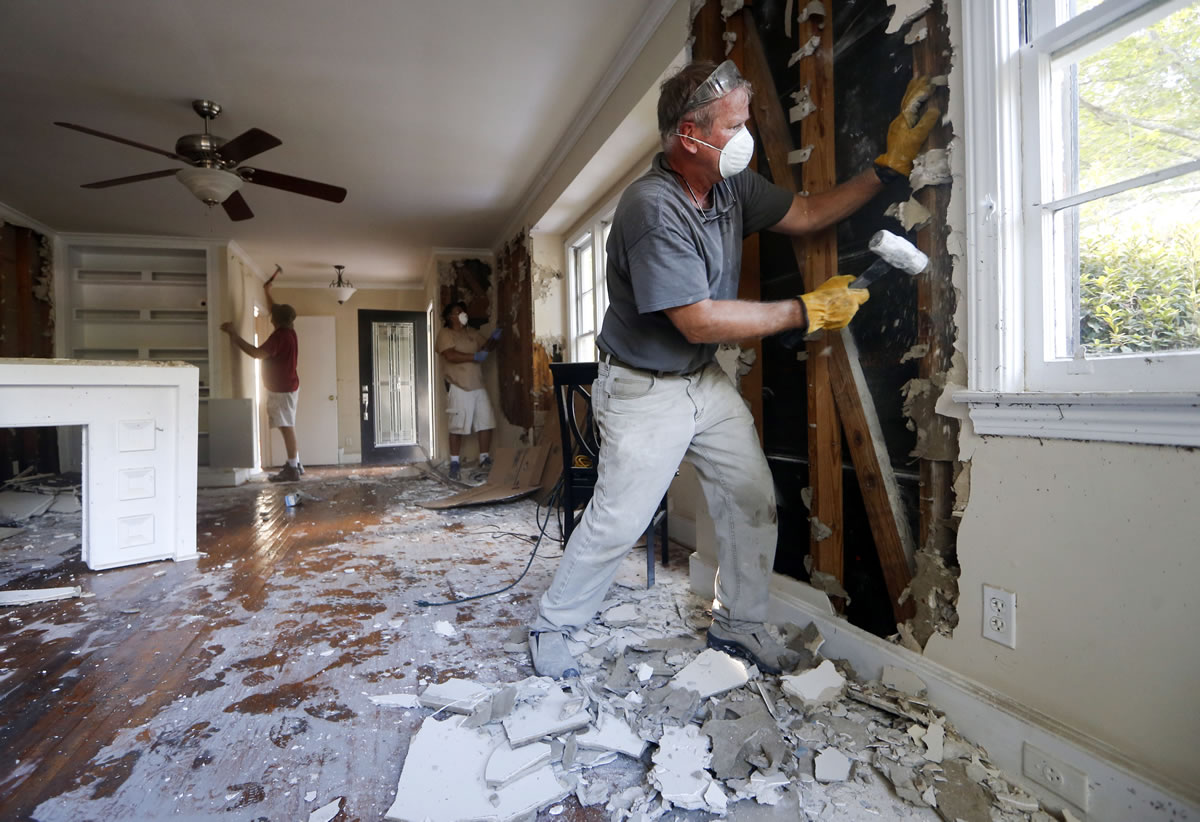COLUMBIA, S.C. — South Carolina’s capital city had too much water. Now, officials are racing to make sure it has enough.
A canal that serves as the main source of drinking water for about half of the Columbia water system’s 375,000 customers collapsed in two places following historic rainfall and flooding over the weekend, sending contractors scrambling to build a rock dam to plug the holes while National Guard helicopters dropped giant sandbags in the rushing water.
Water from the canal normally flows directly into the reservoir at the city’s water treatment plant. But with the water level falling because of the levee breach, workers were forced to place orange pumps on the banks of the canal to pump water directly into the reservoir. And if that wasn’t enough, the city had plans to pump water directly from the nearby Broad River.
Officials sought to beat back rampant rumors of an imminent water shortage.
“The system is running and it is running strong,” Columbia Mayor Steve Benjamin told reporters.
Meanwhile, Gov. Nikki Haley issued a terse warning to thousands of people in low-lying areas near the coast to “strongly consider evacuating” before a mass of water rumbling toward the ocean floods some places for up to two more weeks.
Any mandatory evacuations would be ordered by local officials.
She asked people watching on television to call relatives who may have a false sense of security after surviving hurricanes, calling the second round of expected flooding “a different kind of bad.” She said the standing water could last up to 12 days.
“We have thousands of people that won’t move. And we need to get them to move,” she said. “They don’t need to be sitting in flooded areas for 12 days.”
In Georgetown County near the swollen Black River, National Guardsmen made multiple runs in a military truck to pick up people whose homes had been cut off by submerged roads, sometimes driving through water several feet deep. Among its passengers were a woman and her three children, who were dropped them off at a shelter in Georgetown.
Back in Columbia, city officials urged residents to conserve water. And when they do use it, they have to boil it at least one minute. Restaurants are offering bottled water and serving meals on paper plates to avoid washing dishes. And many people often make daily trips to grocery stores to stock up on water.
The city is like hundreds of others along the East Coast and in the Midwest that have been told to fix their aging infrastructure.
Columbia is under orders from the U.S. Environmental Protection Agency to fix its sewage treatment plant and sewer pipes to reduce overflows that can contaminate waterways. Those orders include spending $1 million on projects to reduce flooding along Gills Creek, one of the areas devastated by record rainfall and flooding.



